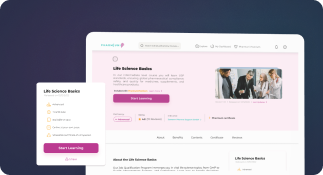Quality Control (QC)
Definition
Quality Control (QC) in the pharmaceutical industry refers to the set of procedures and activities employed to ensure that a pharmaceutical product meets predefined quality criteria and regulatory standards. QC involves the testing of raw materials, in-process samples, and finished products to verify identity, strength, purity, and other quality attributes.
QC is a critical component of Good Manufacturing Practice (GMP) and ensures that medications are safe, effective, and free from contamination or defects.
Detailed Explanation
Purpose and Importance of QC in Pharmaceuticals
The primary goal of Quality Control in pharmaceuticals is to ensure that every product released to the market complies with the specifications approved by regulatory authorities such as the FDA (U.S. Food and Drug Administration), EMA (European Medicines Agency), and WHO (World Health Organization). QC plays a vital role in safeguarding public health by preventing the distribution of substandard or counterfeit products.
Key Components of QC
QC encompasses a wide range of activities and testing methodologies. These include:
- Raw Material Testing: Verifying the identity and purity of active pharmaceutical ingredients (APIs) and excipients before use in production.
- In-Process Testing: Monitoring critical quality attributes during manufacturing to ensure consistency and compliance.
- Finished Product Testing: Conducting tests on the final product to confirm it meets all specifications for identity, potency, dissolution, sterility, and more.
- Stability Testing: Assessing how the quality of a drug varies over time under the influence of environmental factors such as temperature, humidity, and light.
- Microbiological Testing: Ensuring that products are free from harmful microorganisms, especially for sterile and non-sterile dosage forms.
QC Laboratories
Pharmaceutical QC is performed in specialized laboratories that are designed to meet strict regulatory requirements. These labs are equipped with analytical instruments such as high-performance liquid chromatography (HPLC), gas chromatography (GC), UV spectrophotometers, and microbiological testing equipment. Laboratories must follow validated methods and maintain detailed documentation to ensure data integrity and traceability.
Regulatory Expectations
Regulatory agencies require that pharmaceutical companies implement robust QC systems as part of their quality management systems. Key regulatory documents that outline QC expectations include:
- 21 CFR Part 211 (U.S. FDA – Current Good Manufacturing Practice for Finished Pharmaceuticals)
- ICH Q6A and Q6B (Specifications: Test Procedures and Acceptance Criteria)
- EU GMP Guidelines – Part I, Chapter 6: Quality Control
Examples and Contexts of Use
QC is applied throughout the product lifecycle, from development to post-market surveillance. Examples include:
- Testing a batch of tablets for uniformity of dosage units before release.
- Analyzing the sterility of injectable drugs.
- Monitoring the stability of a vaccine over its shelf life.
- Using validated analytical methods to assess the identity and potency of a new API.
Relationship with Quality Assurance (QA)
While Quality Control involves the operational techniques and activities used to fulfill quality requirements, it is closely related to Quality Assurance (QA), which focuses on the overall system and processes to ensure quality. QC is a subset of QA and both are essential for maintaining product integrity and compliance.



